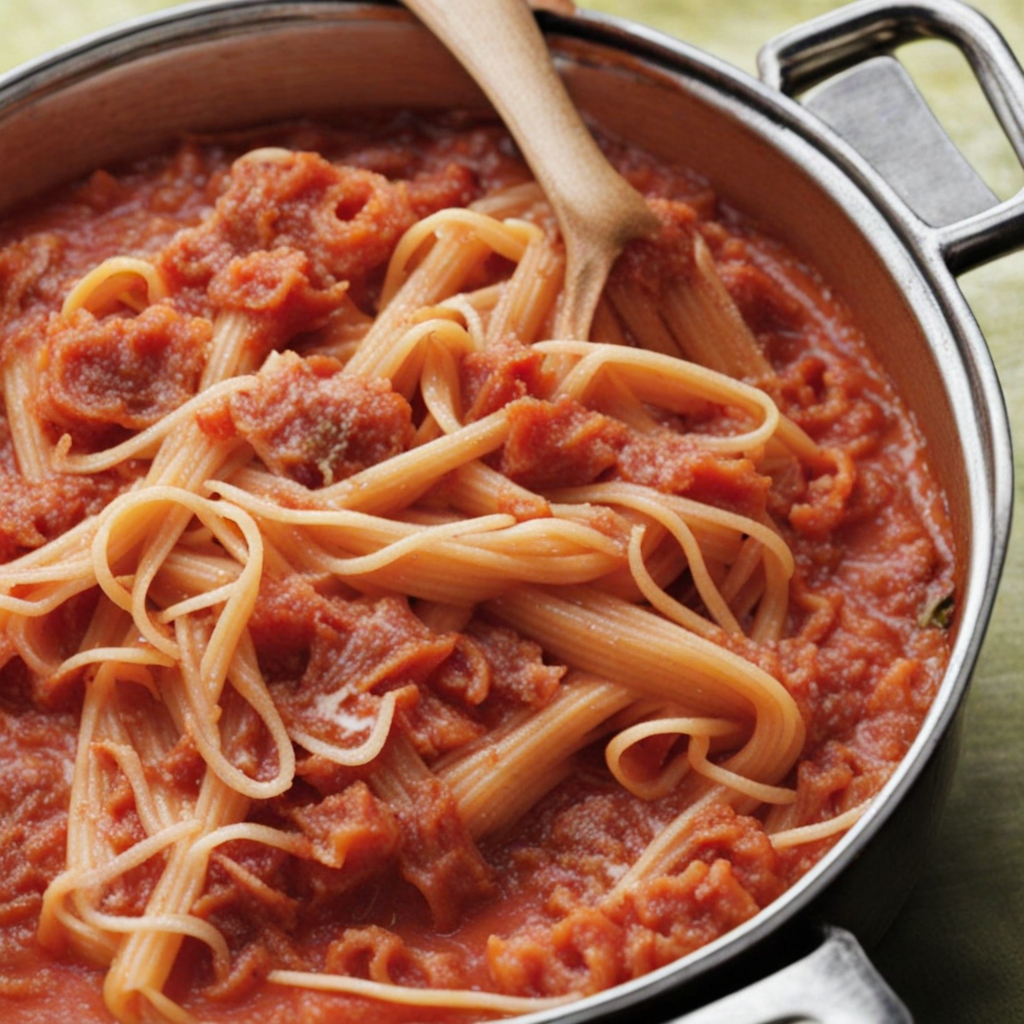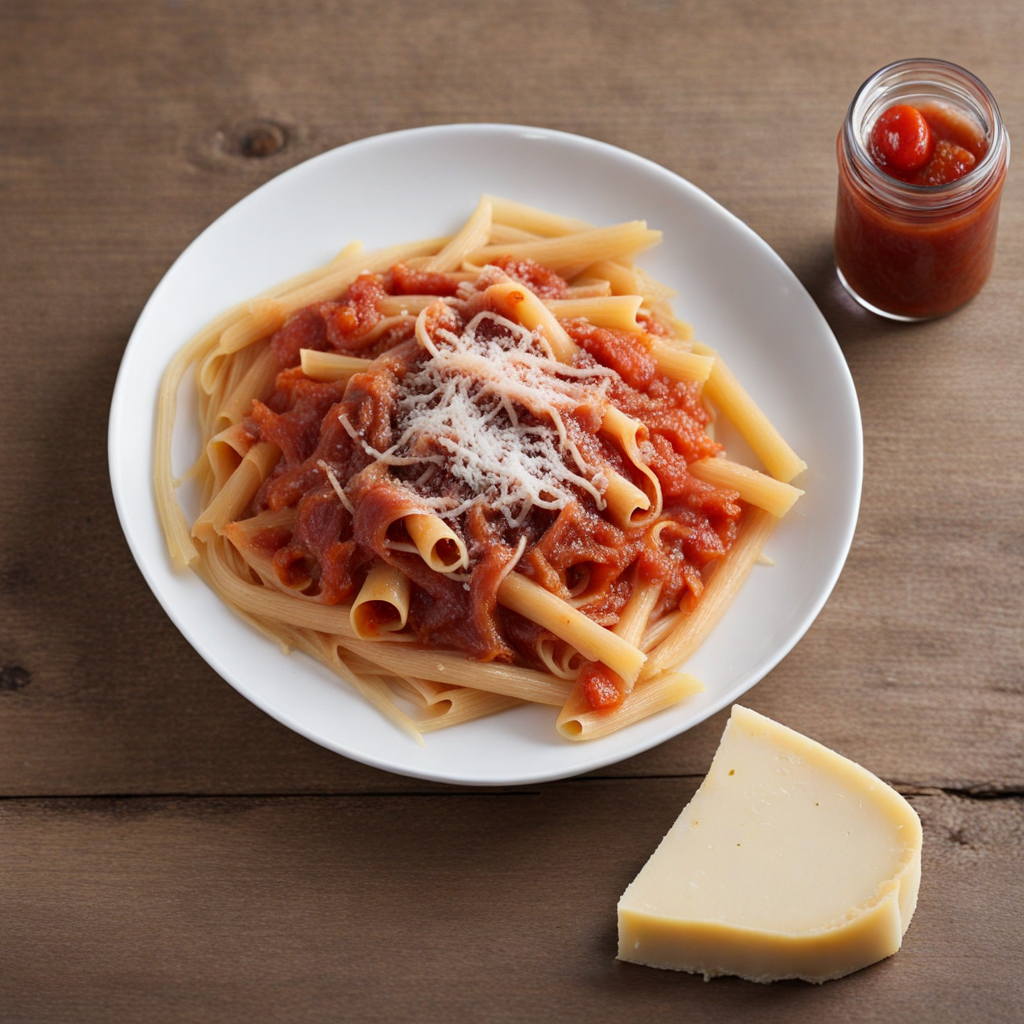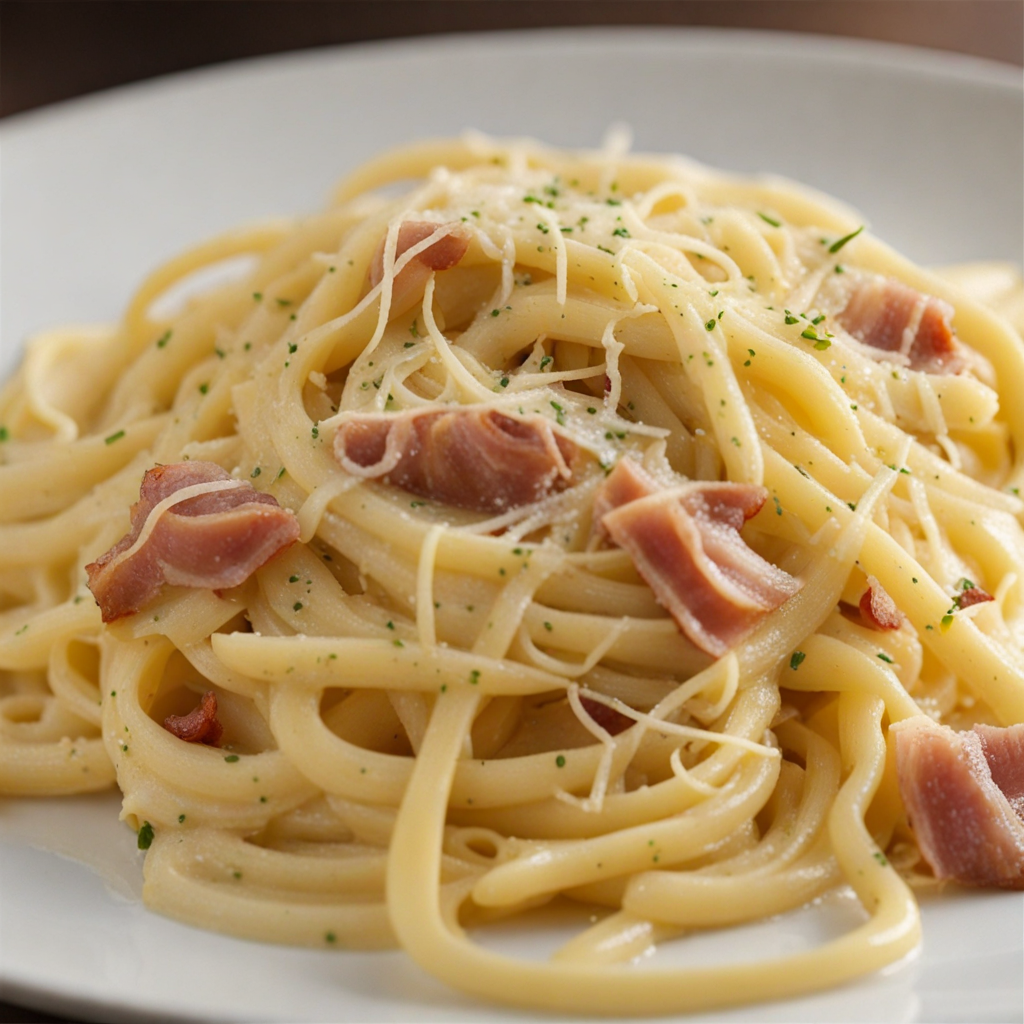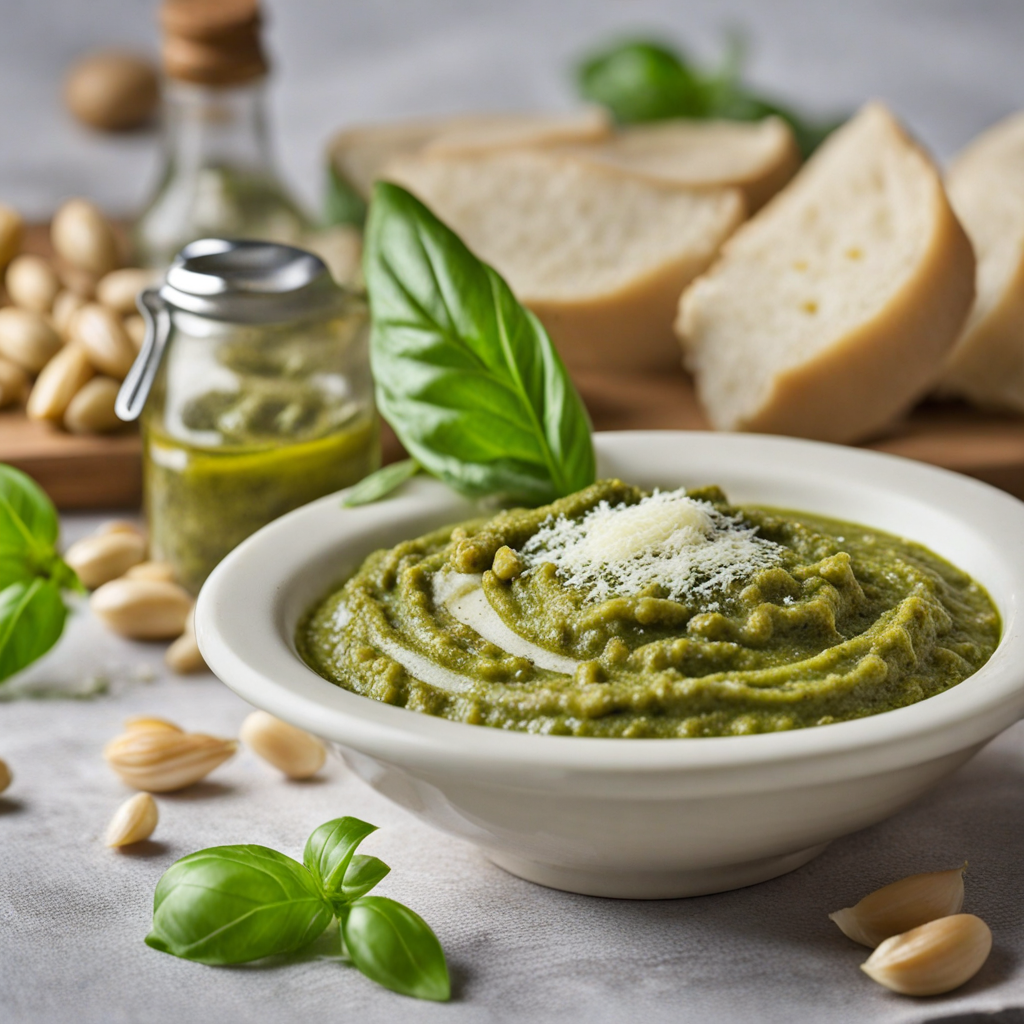Amatriciana
Amatriciana is a classic Italian pasta dish that hails from the town of Amatrice, located in the central region of Lazio. This dish showcases the beauty of simple ingredients coming together to create a rich, comforting experience. At its core, Amatriciana features al dente pasta, traditionally bucatini, which is a thick spaghetti-like noodle with a hole running through the center. This unique shape allows the pasta to hold onto the sauce beautifully, ensuring each bite is packed with flavor. The sauce itself is a delightful combination of guanciale (cured pork cheek), tomatoes, Pecorino Romano cheese, and a hint of red pepper flakes, adding a touch of warmth without overwhelming the palate. The star of Amatriciana is undoubtedly the guanciale, which delivers a savory depth that is hard to resist. When cooked, it becomes wonderfully crisp and infuses the dish with its rich, porky flavor. The tomatoes, usually San Marzano, contribute a vibrant acidity that balances the richness of the guanciale, while the grated Pecorino Romano adds a salty, nutty finish that ties everything together. The dish is often topped with additional cheese and pepper flakes, elevating its flavor profile and inviting you to savor each bite. What makes Amatriciana truly special is its ability to transport you to Italy with every forkful. The contrasting textures of the crispy guanciale, the creamy sauce, and the chewy pasta create a symphony of taste and mouthfeel. It's a dish that embodies the essence of Italian cooking: simple yet unforgettable. Whether enjoyed in a traditional trattoria or made in the comfort of your kitchen, Amatriciana is a celebration of flavors that invites you to explore the heart of Italian cuisine.
How It Became This Dish
The Origins of Amatriciana Amatriciana, a classic Italian pasta dish, has its roots in the town of Amatrice, located in the mountainous region of Lazio, just north of Rome. Traditionally, it was made with simple and rustic ingredients, reflecting the agricultural practices of the area. The dish’s foundation is based on guanciale (cured pig cheek), pecorino Romano cheese, and tomatoes, all of which were readily available to the local populace. The earliest mentions of Amatriciana date back to the 18th century, although it is believed that a precursor to the dish existed even earlier. Initially, it was known as “gricia,” which did not include tomatoes. The introduction of tomatoes into Italian cuisine came after the vegetable was brought to Europe from the Americas in the 16th century, and it slowly gained acceptance in various dishes, including Amatriciana. The combination of guanciale and pecorino Romano with tomatoes created a harmonious balance of flavors, making it a beloved staple. \n\n Cultural Significance Amatriciana is not just a dish; it is a cultural emblem of the region. The town of Amatrice celebrates its culinary heritage with the annual Sagra degli Spaghetti all'Amatriciana, a festival dedicated to this iconic dish. This event attracts food lovers and tourists who come to enjoy the rich flavors and community spirit. The festival highlights the importance of local traditions and the pride residents take in their culinary heritage, reinforcing the connection between food and cultural identity. The dish has also been recognized by various Italian culinary institutions, emphasizing its historical and cultural value. In 2016, the town of Amatrice was tragically affected by a devastating earthquake, which led to a renewed focus on preserving its culinary traditions. The hashtag #Amatriciana4Amatrice gained traction on social media as a means to support the town by encouraging people to enjoy the dish and raise funds for reconstruction efforts. \n\n Ingredients and Preparation The authenticity of Amatriciana lies in its ingredients. The use of guanciale is crucial; it is preferred over pancetta due to its richer flavor and unique texture. Guanciale is made from the pork cheek, cured with salt and spices, and aged until it develops a complex flavor profile. The choice of pasta is also significant, with bucatini being the traditional option. This thick spaghetti-like pasta features a hollow center, which holds the sauce beautifully. The preparation of Amatriciana is relatively straightforward yet requires attention to detail. First, the guanciale is cut into small pieces and gently rendered in a pan until it becomes crispy and releases its flavorful fat. Next, tomatoes, either fresh or canned, are added to create a sauce that melds with the savory notes of the guanciale. Finally, the cooked bucatini is tossed in the sauce and finished with a generous sprinkle of grated pecorino Romano. This simple yet robust method captures the essence of rustic Italian cooking, emphasizing quality ingredients and straightforward techniques. \n\n Regional Variations As Amatriciana has gained popularity, various interpretations have emerged across different regions of Italy. In Rome, for example, the dish is often prepared with a more pronounced emphasis on tomatoes, resulting in a richer sauce. Some chefs may even add a pinch of chili pepper for an extra kick. However, purists argue that this deviates from the original recipe, which was meant to highlight the flavors of the guanciale and cheese without overshadowing them. In the broader context of Italian cuisine, Amatriciana holds a special place among the classic pasta sauces. It is often compared to other famous sauces such as carbonara and cacio e pepe, both of which also reflect the simplicity and brilliance of Roman cooking. Each dish, while distinct, shares a common bond in their reliance on high-quality ingredients and the traditions of the Lazio region. \n\n Amatriciana in Popular Culture Amatriciana has transcended its humble origins to become a symbol of Italian cuisine worldwide. The dish frequently appears on the menus of Italian restaurants, not just in Italy but across the globe. Its popularity can be attributed to its robust flavor, simplicity, and the comfort it provides. In recent years, chefs have experimented with the dish, incorporating local ingredients or modern cooking techniques while still paying homage to its roots. Moreover, Amatriciana has made its way into popular culture, featuring in cookbooks, television shows, and food documentaries that celebrate Italian culinary traditions. The dish serves as a reminder of the importance of food in bringing people together, fostering a sense of community and shared experience, whether at family gatherings or in bustling restaurants. \n\n Conclusion: A Dish with a Story Amatriciana is more than just a delicious plate of pasta; it embodies a rich history and cultural significance that resonates deeply with both locals and culinary enthusiasts alike. The dish represents the resilience of the town of Amatrice and the enduring love for traditional recipes that have stood the test of time. As it continues to evolve and adapt, Amatriciana remains a testament to the power of food in connecting people to their heritage, celebrating the flavors of Italy, and fostering a sense of belonging. This beloved dish, with its simple yet profound ingredients, captures the spirit of Italian cooking—a celebration of life, community, and the joys of sharing a meal.
You may like
Discover local flavors from Italy







